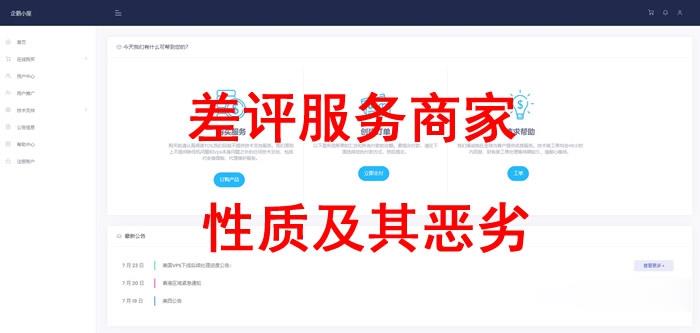demediawiki
mediawiki 时间:2021-04-13 阅读:()
BachelorThesisLattice-BoltzmannSimulationsinComplexGeometriesGeorgRempferOctober1,2010Supervisor:Prof.
Dr.
ChristianHolmInstituteforComputationalPhysics,UniversityofStuttgartThepictureonthetitlepageshowsasnapshotfromamoleculardynamicssimulationofachargedslitporecontainingcounterionsintheirequilibriumdistribution.
EidesstattlicheErklrungHiermiterklreich,dassichdievorliegendeArbeitselbstndigundohnefremdeHilfebzw.
un-erlaubteHilfsmittelangefertigt,anderealsdieangegebenenQuellenundHilfsmittelnichtbenutztunddiedenbenutztenQuellenwrtlichoderinhaltlichentnommenenStellenalssolchekenntlichgemachthabe.
Stuttgart,1.
Oktober2010GeorgRempferContents1Introduction11.
1Objectiveofthisthesis21.
2Investigatedsystem22Theoreticaltreatment42.
1Theelectrokineticequations42.
2Analyticalsolutionoftheelectrokineticequationsfortheslitporegeometry53Lattice-BoltzmanninESPResSo83.
1BriefdescriptionoftheLattice-Boltzmann-Method83.
2LB-MDcouplingscheme103.
3Bounce-backboundaries123.
4ImplementationofarbitraryboundariesfortheLattice-BoltzmannuidinESPResSo123.
5Atestcase-Poiseuilleowintiltedchannels134SimulationusingESPResSo184.
1Choosingaunitsystem184.
2Simulationparameters194.
3Detaileddescriptionofthesimulation204.
4Efcientlysimulatingsmalldiffusioncoefcients,exploitingthespecialcase224.
5Results235Conclusionandoutlook255.
1Conclusion255.
2Othergeometries255.
3Electrolytesolutionswithtwospeciesofions266Appendices276.
1DerivationoftheBoltzmanndistributionfromthediffusionequation276.
2TheNavier-Stokesequations286.
3Stationarystateforcedensityactingontheuid296.
4Boundaryconditionsforthepotentialcausedbytheiondistribution296.
5Detailedsolutionoftheelectrokineticequationsfortheslitporegeometry306.
6Usedsimulationscripts377References478Acknowledgement491Introduction1IntroductionOnthemicroscale,biologicalsystemsconsistofextensivemultiparticlesystemswithcomplexin-teractions.
Analyticallydeterminingthebehaviourofsuchsystemsisanimpossibletask,butwiththeincreasingcalculationpowerofmoderncomputersystems,thiseldhasbecomeoneofthemainareasforconductingresearchviacomputersimulations.
Thereareall-atomsimulationsthatessentiallysolvetheNewtonianequationsofmotionbymodelingtheinteractionsbetweensingleatomswithmoreorlesscomplexpotentials.
Unfortunately,thenecessarycalculationtimeofthisapproachimposesseriouslimitationsonthepossiblesystemsizeandsimulationtimes,bothofwhichcauseproblemsinbiologicalsystemssinceaminoacidsinbiologicaltissueformproteinswithover100,000atomsandtheprocessesinsuchmacromoleculestakeplaceontimescalesrangingfromfemtosecondsforthemovementofasingleatomuptominutesorevenhoursforthefoldingofsomeproteins[22].
However,inmostofthosecasesitisnotnecessarytoaccountforeverysingleparticle.
Oneapproachtoreducethenecessarycomputationaleffortareso-calledcoarse-grainedsimulations.
Insuchsimulations,severalatomsinamacromoleculearecombinedintoasingleparticleinthesimulation,whilepre-servingtheoriginalpropertiesofthemacromoleculetotheextentnecessary.
Butthisapproachliesbeyondthescopeofthisthesis.
Inthisthesis,wereducethenumberofdegreesoffreedombyreplacingthehugenumberofsolventmoleculespresentinbiologicalsystemswithamesoscopicuidmodel.
Thereisawiderangeofmethodstomodelsolventproperties.
Theyrangefromso-calledimplicitsolventmod-els[27],wherehydrodynamicinteractionsarecompletelyneglected(e.
g.
weakeningoccuringelectricaleldstoaccountforthedipolarnatureofwater)overBrownianDynamics,wheretheNewtonianequationsofmotionareextendedwithfrictionalandstochasticterms[4],tomethodsthatreproducetheNavier-Stokesequationsonthemesoscopicscaleincaseswherehydrodynam-icshavesignicantinuenceontheinvestigatedbehaviour.
ThereareseveraldifferentalgorithmsthatreproducehydrodynamicsonthemesoscopicscalewithverydifferentmethodsamongwhichthemostwidelyusedonesareDPD,SRTandLBM.
DissipativeParticleDynamics[16]spreadsmomentumthroughtheparticlesusingadditionalbigparticleswithasoftinteractionpotential.
StochasticRotationDynamics[25]mimicstheeffectofcollisionsbetweenparticlesbyrandomlyrotatingpartsoftheirvelocitiesandtheLattice-Boltzmann-Method[12]discretisesspace,timeandtheuidvelocitytoallowforanefcientcalculation.
-1-1Introduction1.
1Objectiveofthisthesis1.
1ObjectiveofthisthesisThefocusofthisthesisliesonthesimulationofprocessesinmoleculardynamicsthataregov-ernedbyelectrostaticandhydrodynamicinteractionsinvolumeswithboundaries.
Therstob-jectiveistochangetheexistingimplementationoftheLattice-Boltzmann-MethodinESPResSo(ExtensibleSimulationPackageforResearchonSoftmatter)sothatitcanhandlesystemswitharbitrarilycomplexboundarygeometries.
Thenecessaryimplementationsofalgorithmstohandletheelectrostaticsalreadyexist.
Additionally,ascenarioinvolvingtheuid-boundaryinteractionandtheuid-particleinteractionissupposedtobedeveloped.
Forthisscenario,analyticalresultsshouldbeobtainedwithwhichthecorrectnessoftheimplementationcanbeveried.
1.
2InvestigatedsystemThemethodofchoicetotreatthescenarioanalyticallyaretheelectrokineticequations,whichareasystemofcoupledpartialdifferentialequations.
Thisisanapproximation,replacingtheelec-trostaticpotentialofchargedparticlesbythepotentialcausedbyacontinuouschargedistributionwhichresemblesthedistributionoftheparticlesinatimeaverage(cf.
section2.
1foramorede-taileddescription).
Forustobeabletosolvetheelectrokineticequationsanalytically,thegeometryofthesystemhastofulllveryspecicconditions,whichare:Translationalsymmetryintwospacialcoordinates,sothattheelectrokineticequationscon-sistofordinaryratherthanpartialdifferentialequations,preferrablybestdescribedinacartesiancoordinatesystem,becausethedifferentialopera-torsassumethesimplestpossibleshape,boundariessothatthereisastationarystateundertheinuenceofhomogeneousforceelds,stillenoughcomplexitytoallowfornontrivialbehaviour.
Asystemwhichfulllsallthoseconditionsandadditionallyissimpletosimulatewithperiodicboundaryconditions,istheelectro-osmoticowinaninniteslitpore.
Itconsistsoftwocharged,parallel,inniteplanes,containingasolventwithcounterions,sothatthesystemmaintainselec-tricalneutrality,andhasaconstantelectricaleldappliedalongthoseplanes(cf.
gure1).
Sincethewallsandcounterionsareoppositelycharged,thestationarycounteriondensityintheproximityofthewallwillbeincreased.
Theexactdistributionisdeterminedbythetemperature,charge,anddensityoftheionsandbythepermittivityofthesolvent.
-2-1Introduction1.
2InvestigatedsystemFigure1:Theinvestigatedsystem,consistingofaninniteslitpore,boundedbychargedwalls,containingauidwithcounterionsinsolution.
Additionallyshownistheexternallyappliedelectricaleldandthechosencartesiancoordinatesystem.
Theionswillbepulledalongtheslit,inturnpullingthesolventalong.
Astationarystatewillbereachedwhenthemomentumdissipationduetofrictionbetweenthesolventandthewallsequalsthemomentumtransfertotheionscausedbytheelectricaleld.
Theexactshapeoftheproleoftheuidvelocityinx-directiondependsontheiondistributionbutiszeroatthewallsduetotheno-slipboundaryconditionsthatwearegoingtoimposeandissymmetrictotheplanecenteredinbetweenthewallsduetothesymmetryofthegeometry.
However,itwillnotbeaparabolasincethisistheresultfortheso-calledPoiseuilleow,wherethereisahomogeneousforcedensityactingontheuid.
Inourcasetheforcedensityisinhomogeneousduetotheinhomogeneousdistributionofthecounterions.
However,theslitporeisnottheonlygeometrywhichfulllstherequirements.
Anotherpossibilitywouldbetheinnitecylinder.
Section5.
1containsthecorrespondingequationsforthatcase.
-3-2Theoreticaltreatment2Theoreticaltreatment2.
1TheelectrokineticequationsOnewaytodescribethedynamicsofthegivensystemisbynotlookingatthetrajectoriesofindividualions,butratherbyrepresentingthemwiththetimeaverageoftheirspacialdistributionρ.
Sinceweareonlyinterestedinthestationarystateofthesystem,wehavenoproblemjustifyingthatwecanactuallytakesuchanaverage–wehaveinnitetimeavailabletoaverageover.
Theequationdescribingtheiondensityρinthismodelisthediffusionequationj=DρΨ·j=0,withjtheiondensityow,Dthediffusioncoefcient,themobilityoftheionsinthesolvent,andΨaconservativeforcedensityactingontheiondistribution.
Thesecondequationistheequationofcontinuity·j=tρinthestationarycase.
WiththeEinstein-StokesrelationD=kB·T,onecanshowforsimplyconnectedgeometries,thatifastationarystateexists,theiondensityρresemblesaBoltzmanndistributioninthepotentialΨ(cf.
section6.
1forthedetailedderivation)ρ=c·expΨkBT.
(1)Unfortunately,thisapproachdoesnottakeintoaccounttheinuenceoftheunderlyingsolvent.
Toaccountforthat,wehavetointroduceanadditionaltermρvintothediffusionequation,whichyieldstheconvection-diffusionequationj=DρΨ+ρv,withthesolventvelocityv.
Thisvelocityontheotherhand,isdeterminedbytheNavier-Stokesequationsρtv+ρvv=P+ηv+f,whichcanbedrasticallysimpliedinourcase(cf.
section6.
2fordetails),yieldingtheStokesequationsv=1ηP1ηf,withηthedynamicviscosity,Pthepressureandftheforcedensityactingontheuid.
Wealsohavetoconsiderthatinthecaseofelectro-osmosis,theforcedensityΨactingontheiondistributionconsistsoftwoparts,theelectricaleldΦ,causedbytheiondistributionitselfand-4-2Theoreticaltreatment2.
2AnalyticalsolutionoftheelectrokineticequationsfortheslitporegeometrytheexternaleldEextΨ=ρq·Φ+1εrEext,whereqdenotesthechargeofanindividualion.
TheforcedensitiesfandΨareactuallythesame(cf.
section6.
3fortheproof).
AddingthePoissonequationtodescribetheelectrostaticpotentialΦcausedbytheionsgivesusthefullelectrokineticequations.
Thisisalsowheretheapproximationhappens.
Insteadofthechargedistributionofsingleions,whichwouldessentiallybeseveralδ-peaksmovingaccordingtotheNewtonianequationsofmotion,oneusesthechargedistributioncomingfromthedistributionsofionsinthetimeaverage.
Thisapproximationbecomesinvalidforhigheriondensities[11].
Forastationarystatewithanisotropic,incompressiblesolventofpermittivityεr,theelectrokineticequationsassumethefollowingshape,ε0beingthevacuumpermittivity:j=Dρ+ρq·1εrEextΦ+ρv,·j=0,Φ=qε0εr·ρ,v=1ηPρqη·1εrEextΦ,·v=0.
EvenwiththeNavier-Stokesequationsbeinglinearduetodrasticsimplications,thissystemofpartialdifferentialequationscannotbesolvedanalyticallyformostgeometries,becauseoftheextensivecouplingbetweentheindividualequations(cf.
colouringofthevariables).
Sincetheseequationsconstituteanadequatemodelforprocessesintheeldoftechnicalbiologyandchemistry(i.
e.
substanceseparation,surfacecharacterisation,ordrugrelease),theyaresubjecttonumericalexamination[18],[19].
2.
2AnalyticalsolutionoftheelectrokineticequationsfortheslitporegeometryMakinguseofthepropertiesofourslitporegeometry,wecanreducethecouplingoftheequationsinsuchawaythatnocomponentofthediffusionequationiscoupledtoboth,thePoissonequationandtheNavier-Stokesequation.
Elementaryoperationsinvolvingtheno-slipboundaryconditionsandsymmetryargumentsyieldfortheiondensityowjx=ρqεr·E+ρvx,jy=D·yρρq·yΦ=0,jz=0,-5-2Theoreticaltreatment2.
2AnalyticalsolutionoftheelectrokineticequationsfortheslitporegeometrywithEtheabsoluteoftheexternaleldintensityEext.
Fortheelectrostaticpotentialweget2yΦ=qε0εr·ρ,(2)forthesolventvelocity2yvx=qEεrη·ρ,vy=0,vz=0,(3)andforthepressurexP=0,yP=ρq·yΦ,zP=0.
(4)Thissetofequationsisconceptuallyeasytohandle.
Onecaneitherarguethattheorem(1)appliestoequation(2)or,inthisspecialcase,solvetheequationfortheiondensityowiny-directiondirectly,usingseparation(cf.
section6.
5).
TheresultisthattheiondensityρresemblesaBoltzmanndistributioninthepotentialqΦρ=c·expqΦkBT.
(5)CombiningthisresultwiththePoissonequation(2)yieldsthePoisson-Boltzmannequation2yΦ=qcε0εr·expqΦkBT,(6)animportantansatz,veryoftenusedtoobtainelectrolyticequilibriumdistributions[11],[7],[26].
Seesection6.
1foramoregeneralderivation.
Solvingthisequation(cf.
section6.
5fortheusedmathematicalmethods)andemployingtheobtainedΦbackintoansatz(5)resultsintheiondis-tributionρ(y)=ε0εrC22kBT·1cos2qC2kBT·y,qC2kBT·y0.
UsingtheEinstein–StokesequationD=·kBT,whichlinksthediffusioncoefcientD,the-32-6Appendices6.
5DetailedsolutionoftheelectrokineticequationsfortheslitporegeometrymobilityandthetemperatureT,wegetρ=ρ0·expqΦkBT,(18)withtheBoltzmannconstantkB.
SinceqΦ=Epot,thepotentialenergyintheelectriceld,thisessentiallyresemblesaBoltzmanndistributionoftheiondensityinthepotentialcausedbyitsownchargeandthesurfacechargesatthebordersonthewalls.
Combiningthisansatz(18)fortheiondistributionwiththePoissonequation(13)allowsustodetermineboth,theelectrostaticpotentialandtheiondistribution:Φ=qε0εrρρ=ρ0·expqΦkBT,ρ0>0.
HenceforthΦ=qρ0ε0εr·expqΦkBT.
ThisisthethePoisson-Boltzmannequationforthesimplestcase-onlyonespeciesofions.
Wearegoingtosolvethisequationforthevolumebetweenthewallsandincorporatetheinuenceofthesurfacechargesonthewallthroughtheboundaryconditions.
Inarststep,weusethetranslationalinvarianceofoursystemtomakethisaone-dimensionalproblem,leavinguswithanordinaryinsteadofapartialdifferentialequation:Φ=2xΦ=0+2yΦ+2zΦ=0=2yΦanditfollowsthat2yΦ=qρ0ε0εr·expqΦkBT.
(19)Withthefollowingprocedure,theorderofthisordinarydifferentialequationcanbereducedtoone,allowingustointegrateitusingseparation.
From2yΦ(y)=qρ0ε0εr·expqΦ(y)kBT(19)weget,bymultiplyingthiswith2yΦ(y)andusingthechainruley(yΦ(y))2=yΦ(y)C12qρ0ε0εr·expqukBTdu+C2,-33-6Appendices6.
5DetailedsolutionoftheelectrokineticequationsfortheslitporegeometryforsomerealconstantC2.
Goingahead,weconcludey(yΦ(y))2=2ρ0kBTε0εr·expqΦ(y)kBT+C3,whereC3isgivenbyC3=2ρ0kBTε0εrexpqC1kBT+C2,sothatwenallygetyΦ(y)=±2ρ0kBTε0εr·expqΦ(y)kBT+C3.
Atthispoint,wehaveobtainedanautonomousrstorderdifferentialequationforΦandhaveintroducedanarbitraryvariable,sowecanstillsatisfythetwoboundaryconditionswehavetoimposeontheoriginalsecondorderequation.
Autonomousrstorderdifferentialequationsarealwayssolvablebyseparation.
Doingthis,wearetoldthatΦhastosatisfyyΦ(y)Φ02ρ0kBTε0εr·expqukBT+C31/2du=±1,whichyieldstoΦ(y)Φ02ρ0kBTε0εr·expqukBT+C31/2du=±(yy0),Φ(y0)=Φ0.
Thus,Φisgivenimplicitlyasasolutionof:2kBTq√C3·arctanh2ρ0kBTε0εrC3·expqΦ(y)kBT+1arctanh2ρ0kBTε0εrC3·expqΦ0kBT+1=±(yy0).
WearefreeinthechoiceofΦ0.
AcleverchoiceisΦ0:=kBTqlogε0εrC32ρ0kBTsinceitsimpliestheequationto2kBTq√C3·arctanh2ρ0kBTε0εrC3·expqΦ(y)kBT+1=±(yy0).
UpfromherewereareabletogetΦexplicitly,sincetheaboveequationisequivalentto2ρ0kBTε0εrC3·expqΦ(y)kBT+1=±tanhq√C32kBT·(yy0)-34-6Appendices6.
5Detailedsolutionoftheelectrokineticequationsfortheslitporegeometryfromwhichwendthat2ρ0kBTε0εrC3·expqΦ(y)kBT=tanh2q√C32kBT·(yy0)1,thusexpqΦ(y)kBT=ε0εrC32ρ0kBT·tanh2q√C32kBT·(yy0)1,sowenallyarriveatΦ(y)=kBTq·logε0εrC32ρ0kBT·tanh2q√C32kBT·(yy0)1,orinnicertermsΦ(y)=kBTq·logε0εrC32ρ0kBT·1cosh2q√C32kBT·(yy0).
Ifwechoosetheoriginofourcoordinatesystemtobelocatedinthecenterbetweenthetwowalls,wehaveanadditionalmirror-symmetrytothex-z-plane,whichimpliesy0=0.
Φ(y)=kBTq·logε0εrC32ρ0kBT·1cosh2q√C32kBT·yForthesolutionbeingdened,theintegrationconstantC3mustbenegative.
ThisalsojustiesourchoiceofΦ0.
ForcosmeticreasonswedeneC2:=C3andusecosh(iu)=cos(u)toexpressthesolutionasΦ(y)=kBTq·logε0εrC22ρ0kBT·1cos2qC2kBT·y.
(20)EmployingthesolutionforthepotentialΦbackintheoriginalBoltzmannansatz(8)yieldsthesolutionfortheiondensityρ(y)=ε0εrC22kBT·1cos2qC2kBT·y,qC2kBT·y<π2.
(21)Surprisingly,ρ0doesn'tappearhereanymore.
Itturnsout,ρ0doesnotscalethechargedensitybutisamereintegrationconstantthatcanbeusedtoadjustthepotentialΦ.
Sincewearenotinterestedinthepotential,wewillignoreit.
Wewillseethatthedemandforchargeneutralitycanbeincorporatedwiththeboundaryconditionsandthatthechargeratioisactuallyneededtodisambiguatetheboundaryconditions.
Seesection6.
4forthederivationoftheboundaryconditions,whichyieldatranscendentalequationfortheintegrationconstantC,thatcanbesolved-35-6Appendices6.
5Detailedsolutionoftheelectrokineticequationsfortheslitporegeometrynumerically:C·tanqd4kBT·C=σε0εr,0≤C<πkBT2d|q|.
(22)Nowwecannallysolveequation(14)andobtainthevelocityeldofthesolventthatwehaveoriginallybeenlookingfor.
Duetooursymmetriesitis=2yandP=yP(y)·ey.
WiththesolutionsforΦandρ,equation(14)reads2yvx=ε0qEC22kBTη·1cos2qC2kBT·y,2yvy=ε0εrqC32kBTη·tanqC2kBT·ycos2qC2kBT·y+1ηyP,(14)2yvz=0.
Integratingtherstequationtwiceandtakingadvantageofthemirrorsymmetryandtheno-slipboundaryconditiontodeterminetheintegrationconstantsyieldsvx=2ε0EkBTηq·logcosqC2kBT·ylogcosdqC4kBT.
Duetothesamearguments,itisvz=0.
Theincompressibilityofthesolvent,expressedinequation(15),alreadystatesvy=0forthevolumeinbetweenthewalls.
Thisenablesustoutilisethesecondcomponentofeqation(14)todeterminethepressureinthechannel.
vy≡02yvy≡0,thus,yP=ε0εrqC32kBT·tanqC2kBT·ycos2qC2kBT·y,(14)andwegetP(y)=P(0)+y0ε0εrqC32kBT·tanqC2kBT·ucos2qC2kBT·udu=P(0)+ε0εrC22·tan2qC2kBT·y.
-36-6Appendices6.
6Usedsimulationscripts6.
6UsedsimulationscriptsESPResSoTCLscriptforthePoiseuilleowintiltedchannelssetvmd"yes"setsteps2000if{$argc<2}{setagrid1}else{setagrid[lindex$argv1]}setbox_x80setbox_y[expr$box_x/2]setbox_z10setmdskin0.
1setmdbox_l$box_x$box_y$box_zsetmdtime_step1.
0cellsystemdomain_decompositionno_verlet_listlbfluidden1agrid$agridtau1visc1ext_force0.
000141420.
0001414210.
0friction1thermostatlb0lbboundarywallnormal110dist[expr{1.
$box_x/12.
/sqrt(2.
)}]lbboundarywallnormal110dist[expr{2.
$box_x/12.
/sqrt(2.
)}]lbboundarywallnormal110dist[expr{7.
$box_x/12.
/sqrt(2.
)}]lbboundarywallnormal110dist[expr{8.
$box_x/12.
/sqrt(2.
)}]lbboundarywallnormal110dist[expr{13.
$box_x/12.
/sqrt(2.
)}]lbboundarywallnormal110dist[expr{14.
$box_x/12.
/sqrt(2.
)}]setout[open"tilted_channel_45_boundary.
vtk""w"]puts$out"#vtkDataFileVersion2.
0\ntest\nASCII\nDATASETSTRUCTURED_POINTS\nDIMENSIONS$box_x$box_y$box_z\nORIGIN000\nSPACING$agrid$agrid$agrid\nPOINT_DATA[exprint($box_x/$agrid$box_y/$agrid$box_z/$agrid)]\nSCALARSOutArrayfloats1\nLOOKUP_TABLEdefault"setid0-37-6Appendices6.
6Usedsimulationscriptsfor{setz0}{$z<$box_z/$agrid}{incrz}{for{sety0}{$y<$box_y/$agrid}{incry}{for{setx0}{$x<$box_x/$agrid}{incrx}{puts$out"[lbnode$x$y$zprintboundary]"if{[lbnode$x$y$zprintboundary]==1&&$vmd=="yes"}{part$idpos$x$y$ztype1fixincrid}}}}close$outputs"Wroteboundaryfile"if{$vmd=="yes"}{for{setxy0}{$xy+$box_x/12.
<$box_x3.
5/12.
1}{incrxy}{setpos[expr$xy+1+$box_x/12.
]for{setz0}{$z<$box_z}{incrz}{part$idpos$pos$pos$ztype0incrid}}prepare_vmd_connection"tilted_channel_45"3000}for{seti0}{$i<$steps}{incri1}{imdpositionsif{$i%20==0&&$vmd!
="yes"}{putsnonewline"integrating$i"puts"thstep"}-38-6Appendices6.
6Usedsimulationscriptsintegrate1}setout[open"tilted_channel_45_velocity.
vtk""w"]puts$out"#vtkDataFileVersion2.
0\ntest\nASCII\nDATASETSTRUCTURED_POINTS\nDIMENSIONS$box_x$box_y$box_z\nORIGIN000\nSPACING$agrid$agrid$agrid\nPOINT_DATA[exprint($box_x/$agrid$box_y/$agrid$box_z/$agrid)]\nSCALARSOutArrayfloats3\nLOOKUP_TABLEdefault"for{setz0}{$z<$box_z/$agrid}{incrz}{for{sety0}{$y<$box_y/$agrid}{incry}{for{setx0}{$x<$box_x/$agrid}{incrx}{puts$out"[lbnode$x$y$zprintvelocity]"}}}close$outputs"wrotevelocityfile"setout[open"tilted_channel_45_profile.
dat""w"]for{seti0}{$i<$box_y/$agrid}{incri}{setvel_vec[lbnode$i$i[exprint($box_z/$agrid/2)]printvelocity]setvel[exprsqrt([lindex$vel_vec0][lindex$vel_vec0]+[lindex$vel_vec1][lindex$vel_vec1]+[lindex$vel_vec2][lindex$vel_vec2])]puts$out"[expr$i$agridsqrt(2.
)]$vel"}close$outputs"wrotevelocityprofile"setx0[expr2.
$box_x/12.
/sqrt(2.
)]setx1[expr7.
$box_x/12.
/sqrt(2.
)]-39-6Appendices6.
6Usedsimulationscriptssety_max[exprsqrt(5.
)/1000000/2.
(($x0+$x1)($x0+$x1)/4.
$x0$x1)1.
5]setout[open"tilted_channel_45_walls.
dat""w"]puts$out"[expr{1.
$box_x/12.
/sqrt(2.
)}]00$y_max"puts$out"[expr{2.
$box_x/12.
/sqrt(2.
)}]00$y_max"puts$out"[expr{7.
$box_x/12.
/sqrt(2.
)}]00$y_max"puts$out"[expr{8.
$box_x/12.
/sqrt(2.
)}]00$y_max"puts$out"[expr{13.
$box_x/12.
/sqrt(2.
)}]00$y_max"puts$out"[expr{14.
$box_x/12.
/sqrt(2.
)}]00$y_max"close$outputs"wrotewallfile"ESPResSoTCLscriptforelectroosmoticow#SETUP##generalsettime_step0.
02setwarmup_steps10000setmeasure_steps16000000sethistogram_bins32setsample_frames28setvmd_output"no"#worldsetchannel_width12.
00setexternal_field25.
00settemperature1.
00setbjerrum_length0.
7095setN_wall_1D8#solventsetdensity26.
18setviscosity0.
25-40-6Appendices6.
6Usedsimulationscripts#counterionssetN50setcharge1.
00setfriction15.
00#additionalboxlengthsothatdomaindecompositionworkswiththedesired#numberofCPUssetadd_length1.
0#SIMULATION##derivedsettingssetL[expr$channel_width+3+$add_length]setepsilon_r[expr1.
/(4.
3.
1415926541.
428e3$bjerrum_length$temperature)]puts"epsilon_r=$epsilon_r"setF[expr$charge$external_field/$epsilon_r]setq_wall[exprdouble($charge$N)/double(2$N_wall_1D$N_wall_1D)]setq_wall_dist[exprdouble($L)/double($N_wall_1D)]sethistogram_bin_width[exprdouble($L)/double($histogram_bins)]setvelocity_sample_frames[expr5000(5000%$sample_frames)]#basicsimulationsetupputs"settingupboxofsize($L,$L,$Lsetmdskin1.
0setmdbox_l$L$L$Lsetmdtime_step$time_step#initialisesolventfluidputs"initialisinglatticeboltzmannsolventfluid.
.
.
"cellsystemdomain_decompositionno_verlet_listlbfluidden$densityagrid1tau[expr5$time_step]visc$viscosityfriction$frictionthermostatlb$temperature#constraintsforparticles-41-6Appendices6.
6Usedsimulationscriptsputs"settingupwallswithinteractionlength1atx=1andx=[expr$L1constraintwallnormal001.
dist0.
5type0constraintwallnormal001.
dist[expr$L+0.
5+$add_length]type0inter01lennardjones1.
01.
1.
12250.
250#boundariesforthesolventfluidlbboundarywallnormal001dist1.
5lbboundarywallnormal001dist[expr$L+1.
5+$add_length]#wallchargesandvisualisationsetid0puts"placing50wallparticleswithcharge$q_wall.
.
.
"for{sety0}{$y<$L}{sety[expr$y+$q_wall_dist]}{for{setz0}{$z<$L}{setz[expr$z+$q_wall_distparticlesshouldbe0.
5furtheroutsideforvmdpart$idpos$z$y0.
0type2fixq$q_wallincridpart$idpos$z$y15.
0type2fixq$q_wallincrid}}#counterionsputs"placing$Ncounterionswithcharge$chargerandomlyinbetweenthewalls.
.
.
"setfirst_ion_id$idfor{seti0}{$i<$N}{incri}{setdist0.
while{$dist<1.
0}{setz[exprrand()$channel_width+1.
5]sety[exprrand()$L]setx[exprrand()$L]part$idpos$x$y$ztype1q$chargeext_force0$F0-42-6Appendices6.
6Usedsimulationscriptssetdist[analyzemindist]}incrid}#initialiseioninteractionsputs"tuningp3m.
.
.
"#intercoulomb$bjerrum_lengthp3m1.
1651.
puts[intercoulomb$bjerrum_lengthp3mtunev2accuracy1e3mesh16]intercoulombelc1e31.
5puts"settinguplennardjonesinteractionbetweenions.
.
.
"inter11lennardjones1.
1.
1.
12250.
250#vmdoutputif{$vmd_output=="yes"}{prepare_vmd_connection"run"1000}#warmupputs"integrating$warmup_stepswarmupsteps.
.
.
"setout_ecoul[open"warmup_coulomb_energy.
dat""w"]for{seti0}{$i<$warmup_steps}{incri200}{puts"warmupstep$i"integrate200puts$out_ecoul"[expr$i$time_step][analyzeenergycoulomb]"if{$i%1000==0}{flush$out_ecoul}imdpositions-43-6Appendices6.
6Usedsimulationscripts}close$out_ecoul#initialisedatacollectionputs"initialisinghistograms.
.
.
"arraysetdensity_bin{}for{seti0}{$i<$histogram_bins}{incri}{setdensity_bin($i)0}arraysetfluid_velocity{}for{seti0}{$i<$L}{incri}{setfluid_velocity($i)0}arraysetparticle_velocity_bin{}for{seti0}{$i<$histogram_bins}{incri}{setparticle_velocity_bin($i)0}arraysetparticle_velocity_bin_samples{}for{seti0}{$i<$histogram_bins}{incri}{setparticle_velocity_bin_samples($i)0}#measureputs"integrating$measure_stepsmeasurementsteps.
.
.
"setnumber_particle_samples0setnumber_fluid_samples0for{seti0}{$i<$measure_steps}{incri$sample_frames}{puts"measurementstep$i"-44-6Appendices6.
6Usedsimulationscriptsintegrate$sample_framesfor{setk$first_ion_id}{$k<$first_ion_id+$N}{incrk}{setbin[exprint([lindex[part$kprintfolded_pos]2]/double($L)$histogram_bins)]setvel[lindex[part$kprintv]1]incrdensity_bin($bin)setparticle_velocity_bin($bin)[expr$particle_velocity_bin($bin)+$vel]}incrnumber_particle_samplesif{$i%$velocity_sample_frames==0}{for{setz0}{$z<$L}{incrz}{for{sety0}{$y<$L}{incry}{for{setx0}{$x<$L}{incrx}{setfluid_velocity($z)[expr$fluid_velocity($z)+[lindex[lbnode$x$y$zprintvelocity]1]]}}}incrnumber_fluid_samples}imdpositions}#outputputs"writingfiles.
.
.
"setout_density[open"ion_density.
dat""w"]for{seti0}{$i<$histogram_bins}{incri}{setvalue[exprdouble($density_bin($i))/double($number_particle_samples$histogram_bin_width$L$L)]puts$out_density"[exprdouble(($i+0.
5)$L)/double($histogram_bins)]$value"-45-6Appendices6.
6Usedsimulationscripts}close$out_densitysetout_ion_velocity[open"ion_velocity.
dat""w"]for{seti0}{$i<$histogram_bins}{incri}{if{$density_bin($i)!
=0}{puts$out_ion_velocity"[exprdouble(($i+0.
5)$L)/double($histogram_bins)][expr$particle_velocity_bin($i)/double($density_bin($i))]"}}close$out_ion_velocitysetout_fluid_velocity[open"fluid_velocity.
dat""w"]for{seti0}{$i<$L}{incri}{puts$out_fluid_velocity"$i[expr$fluid_velocity($i)/double($number_fluid_samples$L$L)]"}close$out_fluid_velocity#theendif{$vmd_output=="yes"}{puts"pausing10000stokeepvmdalive.
.
.
"after10000000}exit-46-7References7References[1]Espressouser'sguide.
2010.
[2]R.
Adhikari,K.
Stratford,MECates,andAJWagner.
Fluctuatinglatticeboltzmann.
EPL(EurophysicsLetters),71:473,2005.
[3]P.
AhlrichsandB.
Dünweg.
Simulationofasinglepolymerchaininsolutionbycombininglatticeboltzmannandmoleculardynamics.
J.
Chem.
Phys.
,111(17):8225–8239,1999.
[4]MikeP.
AllenandDominikJ.
Tildesley.
ComputerSimulationofLiquids.
OxfordSciencePublications.
ClarendonPress,Oxford,1edition,1987.
[5]R.
Benzi,S.
Succi,andM.
Vergassola.
Thelatticeboltzmannequation:theoryandapplica-tions.
PhysicsReports,222(3):145–197,1992.
[6]P.
L.
Bhatnagar,E.
P.
Gross,andM.
Krook.
Amodelforcollisionprocessesingases.
i.
smallamplitudeprocessesinchargedandneutralone-componentsystems.
PhysicalReview,94(3):511,1954.
[7]D.
BurgreenandFRNakache.
Electrokineticowinultranecapillaryslits1.
TheJournalofPhysicalChemistry,68(5):1084–1091,1964.
[8]S.
ChenandG.
D.
Doolen.
Latticeboltzmannmethodforuidows.
Annualreviewofuidmechanics,30(1):329–364,1998.
[9]M.
DesernoandC.
Holm.
HowtomeshupEwaldsums.
I.
Atheoreticalandnumericalcomparisonofvariousparticlemeshroutines.
J.
Chem.
Phys.
,109:7678,1998.
[10]M.
DesernoandC.
Holm.
HowtomeshupEwaldsums.
II.
AnaccurateerrorestimatefortheParticle-Particle-Particle-Meshalgorithm.
J.
Chem.
Phys.
,109:7694,1998.
[11]M.
Deserno,C.
Holm,andS.
May.
Thefractionofcondensedcounterionsaroundachargedrod:ComparisonofPoisson-Boltzmanntheoryandcomputersimulations.
Macromolecules,33:199–206,2000.
[12]B.
DünwegandA.
Ladd.
LatticeBoltzmannsimulationsofsoftmattersystems.
Springer,2009.
[13]B.
Dünweg,U.
Schiller,andA.
J.
C.
Ladd.
Statisticalmechanicsoftheuctuatinglattice-boltzmannequation.
Phys.
Rev.
E,76:36704,2007.
[14]K.
Grass.
Usinglatticeboltzmanntoincludehydrodynamicinteractionsinespresso.
2009.
[15]K.
C.
Grass.
Towardsrealisticmodellingoffreesolutionelectrophoresis:acasestudyonchargedmacromolecules.
PhDthesis,Goethe-UniversittFrankfurtamMain,2008.
-47-7References7References[16]P.
J.
HoogerbruggeandJ.
M.
V.
A.
Koelman.
Simulatingmicroscopichydrodynamicphenom-enawithdissipativeparticledynamics.
EurophysicsLetters,19(3):155–160,1992.
[17]J.
HorbachandS.
Succi.
Latticeboltzmannversusmoleculardynamicssimulationofnanoscalehydrodynamicows.
Physicalreviewletters,96(22):224503,2006.
[18]J.
P.
Hsu,K.
L.
Liu,W.
L.
Hsu,L.
H.
Yeh,andS.
Tseng.
Diffusiophoresisofacharge-regulatedsphericalparticlenormaltotwoparalleldisks.
TheJournalofPhysicalChemistryB,114(8):2766–2778,2010.
[19]J.
P.
Hsu,K.
L.
Liu,W.
L.
Hsu,L.
H.
Yeh,andS.
Tseng.
Diffusiophoresisofasoftspherenormaltotwoparalleldisks.
Langmuir,2010.
[20]RobertJ.
Hunter.
FoundationsofColloidScience,Volume1.
OxfordSciencePublications.
ClarendonPress,Oxford,1987.
[21]A.
J.
C.
Ladd.
Numericalsimulationsofparticulatesuspensionsviaadiscretizedboltzmannequation.
part1.
theoreticalfoundation.
JournalofFluidMechanics,271:285–309,1994.
[22]K.
Lang,F.
X.
Schmid,andG.
Fischer.
Catalysisofproteinfoldingbyprolylisomerase.
Nature,1987.
[23]S.
H.
LeeandJ.
C.
Rasaiah.
Moleculardynamicssimulationofionmobility.
2.
alkalimetalandhalideionsusingthespc/emodelforwaterat25c.
TheJournalofPhysicalChemistry,100(4):1420–1425,1996.
[24]X.
LiangandS.
Y.
Chou.
Nanogapdetectorinsidenanouidicchannelforfastreal-timelabel-freednaanalysis.
Nanoletters,8(5):1472–1476,2008.
[25]A.
MalevanetsandR.
Kapral.
Continuous-velocitylattice-gasmodelforuidow.
EPL(Eu-rophysicsLetters),44:552,1998.
[26]CLRiceandR.
Whitehead.
Electrokineticowinanarrowcylindricalcapillary.
TheJournalofPhysicalChemistry,69(11):4017–4024,1965.
[27]B.
Roux.
Implicitsolventmodels.
CRCPress,2001.
[28]ArnoldJ.
Storm,CornelisStorm,JianghuaChen,HennyZandbergen,Jean-FrancoisJoanny,andCeesDekker.
Fastdnatranslocationthroughasolid-statenanopore.
NanoLett.
,5:1193,2005.
[29]S.
Succi.
ThelatticeBoltzmannequationforuiddynamicsandbeyond.
OxfordUniversityPress,USA,2001.
-48-8Acknowledgement8AcknowledgementIwanttothank.
.
.
myparentsJrgRempferandPetraZaiser-Rempferfortheircontinuoussupportandrelia-bilitythatmakeitpossibleformetospendthebulkofmytimestudyingmathematicsandphysics.
.
.
.
Prof.
ChristianHolmforofferingmetoworkathisinstitute.
.
.
.
StefanKesselheimforintroducingmeintotheeldofthisthesis.
.
.
.
DominikMüllerforspendingcountlesshoursonmathematicswithme.
.
.
.
AllisonFullerforpractisingenglishwithme,everyday.
.
.
.
Gerhardckerleforlayingthefoundationsthatenabledmetostudyphysics.
-49-
Dr.
ChristianHolmInstituteforComputationalPhysics,UniversityofStuttgartThepictureonthetitlepageshowsasnapshotfromamoleculardynamicssimulationofachargedslitporecontainingcounterionsintheirequilibriumdistribution.
EidesstattlicheErklrungHiermiterklreich,dassichdievorliegendeArbeitselbstndigundohnefremdeHilfebzw.
un-erlaubteHilfsmittelangefertigt,anderealsdieangegebenenQuellenundHilfsmittelnichtbenutztunddiedenbenutztenQuellenwrtlichoderinhaltlichentnommenenStellenalssolchekenntlichgemachthabe.
Stuttgart,1.
Oktober2010GeorgRempferContents1Introduction11.
1Objectiveofthisthesis21.
2Investigatedsystem22Theoreticaltreatment42.
1Theelectrokineticequations42.
2Analyticalsolutionoftheelectrokineticequationsfortheslitporegeometry53Lattice-BoltzmanninESPResSo83.
1BriefdescriptionoftheLattice-Boltzmann-Method83.
2LB-MDcouplingscheme103.
3Bounce-backboundaries123.
4ImplementationofarbitraryboundariesfortheLattice-BoltzmannuidinESPResSo123.
5Atestcase-Poiseuilleowintiltedchannels134SimulationusingESPResSo184.
1Choosingaunitsystem184.
2Simulationparameters194.
3Detaileddescriptionofthesimulation204.
4Efcientlysimulatingsmalldiffusioncoefcients,exploitingthespecialcase224.
5Results235Conclusionandoutlook255.
1Conclusion255.
2Othergeometries255.
3Electrolytesolutionswithtwospeciesofions266Appendices276.
1DerivationoftheBoltzmanndistributionfromthediffusionequation276.
2TheNavier-Stokesequations286.
3Stationarystateforcedensityactingontheuid296.
4Boundaryconditionsforthepotentialcausedbytheiondistribution296.
5Detailedsolutionoftheelectrokineticequationsfortheslitporegeometry306.
6Usedsimulationscripts377References478Acknowledgement491Introduction1IntroductionOnthemicroscale,biologicalsystemsconsistofextensivemultiparticlesystemswithcomplexin-teractions.
Analyticallydeterminingthebehaviourofsuchsystemsisanimpossibletask,butwiththeincreasingcalculationpowerofmoderncomputersystems,thiseldhasbecomeoneofthemainareasforconductingresearchviacomputersimulations.
Thereareall-atomsimulationsthatessentiallysolvetheNewtonianequationsofmotionbymodelingtheinteractionsbetweensingleatomswithmoreorlesscomplexpotentials.
Unfortunately,thenecessarycalculationtimeofthisapproachimposesseriouslimitationsonthepossiblesystemsizeandsimulationtimes,bothofwhichcauseproblemsinbiologicalsystemssinceaminoacidsinbiologicaltissueformproteinswithover100,000atomsandtheprocessesinsuchmacromoleculestakeplaceontimescalesrangingfromfemtosecondsforthemovementofasingleatomuptominutesorevenhoursforthefoldingofsomeproteins[22].
However,inmostofthosecasesitisnotnecessarytoaccountforeverysingleparticle.
Oneapproachtoreducethenecessarycomputationaleffortareso-calledcoarse-grainedsimulations.
Insuchsimulations,severalatomsinamacromoleculearecombinedintoasingleparticleinthesimulation,whilepre-servingtheoriginalpropertiesofthemacromoleculetotheextentnecessary.
Butthisapproachliesbeyondthescopeofthisthesis.
Inthisthesis,wereducethenumberofdegreesoffreedombyreplacingthehugenumberofsolventmoleculespresentinbiologicalsystemswithamesoscopicuidmodel.
Thereisawiderangeofmethodstomodelsolventproperties.
Theyrangefromso-calledimplicitsolventmod-els[27],wherehydrodynamicinteractionsarecompletelyneglected(e.
g.
weakeningoccuringelectricaleldstoaccountforthedipolarnatureofwater)overBrownianDynamics,wheretheNewtonianequationsofmotionareextendedwithfrictionalandstochasticterms[4],tomethodsthatreproducetheNavier-Stokesequationsonthemesoscopicscaleincaseswherehydrodynam-icshavesignicantinuenceontheinvestigatedbehaviour.
ThereareseveraldifferentalgorithmsthatreproducehydrodynamicsonthemesoscopicscalewithverydifferentmethodsamongwhichthemostwidelyusedonesareDPD,SRTandLBM.
DissipativeParticleDynamics[16]spreadsmomentumthroughtheparticlesusingadditionalbigparticleswithasoftinteractionpotential.
StochasticRotationDynamics[25]mimicstheeffectofcollisionsbetweenparticlesbyrandomlyrotatingpartsoftheirvelocitiesandtheLattice-Boltzmann-Method[12]discretisesspace,timeandtheuidvelocitytoallowforanefcientcalculation.
-1-1Introduction1.
1Objectiveofthisthesis1.
1ObjectiveofthisthesisThefocusofthisthesisliesonthesimulationofprocessesinmoleculardynamicsthataregov-ernedbyelectrostaticandhydrodynamicinteractionsinvolumeswithboundaries.
Therstob-jectiveistochangetheexistingimplementationoftheLattice-Boltzmann-MethodinESPResSo(ExtensibleSimulationPackageforResearchonSoftmatter)sothatitcanhandlesystemswitharbitrarilycomplexboundarygeometries.
Thenecessaryimplementationsofalgorithmstohandletheelectrostaticsalreadyexist.
Additionally,ascenarioinvolvingtheuid-boundaryinteractionandtheuid-particleinteractionissupposedtobedeveloped.
Forthisscenario,analyticalresultsshouldbeobtainedwithwhichthecorrectnessoftheimplementationcanbeveried.
1.
2InvestigatedsystemThemethodofchoicetotreatthescenarioanalyticallyaretheelectrokineticequations,whichareasystemofcoupledpartialdifferentialequations.
Thisisanapproximation,replacingtheelec-trostaticpotentialofchargedparticlesbythepotentialcausedbyacontinuouschargedistributionwhichresemblesthedistributionoftheparticlesinatimeaverage(cf.
section2.
1foramorede-taileddescription).
Forustobeabletosolvetheelectrokineticequationsanalytically,thegeometryofthesystemhastofulllveryspecicconditions,whichare:Translationalsymmetryintwospacialcoordinates,sothattheelectrokineticequationscon-sistofordinaryratherthanpartialdifferentialequations,preferrablybestdescribedinacartesiancoordinatesystem,becausethedifferentialopera-torsassumethesimplestpossibleshape,boundariessothatthereisastationarystateundertheinuenceofhomogeneousforceelds,stillenoughcomplexitytoallowfornontrivialbehaviour.
Asystemwhichfulllsallthoseconditionsandadditionallyissimpletosimulatewithperiodicboundaryconditions,istheelectro-osmoticowinaninniteslitpore.
Itconsistsoftwocharged,parallel,inniteplanes,containingasolventwithcounterions,sothatthesystemmaintainselec-tricalneutrality,andhasaconstantelectricaleldappliedalongthoseplanes(cf.
gure1).
Sincethewallsandcounterionsareoppositelycharged,thestationarycounteriondensityintheproximityofthewallwillbeincreased.
Theexactdistributionisdeterminedbythetemperature,charge,anddensityoftheionsandbythepermittivityofthesolvent.
-2-1Introduction1.
2InvestigatedsystemFigure1:Theinvestigatedsystem,consistingofaninniteslitpore,boundedbychargedwalls,containingauidwithcounterionsinsolution.
Additionallyshownistheexternallyappliedelectricaleldandthechosencartesiancoordinatesystem.
Theionswillbepulledalongtheslit,inturnpullingthesolventalong.
Astationarystatewillbereachedwhenthemomentumdissipationduetofrictionbetweenthesolventandthewallsequalsthemomentumtransfertotheionscausedbytheelectricaleld.
Theexactshapeoftheproleoftheuidvelocityinx-directiondependsontheiondistributionbutiszeroatthewallsduetotheno-slipboundaryconditionsthatwearegoingtoimposeandissymmetrictotheplanecenteredinbetweenthewallsduetothesymmetryofthegeometry.
However,itwillnotbeaparabolasincethisistheresultfortheso-calledPoiseuilleow,wherethereisahomogeneousforcedensityactingontheuid.
Inourcasetheforcedensityisinhomogeneousduetotheinhomogeneousdistributionofthecounterions.
However,theslitporeisnottheonlygeometrywhichfulllstherequirements.
Anotherpossibilitywouldbetheinnitecylinder.
Section5.
1containsthecorrespondingequationsforthatcase.
-3-2Theoreticaltreatment2Theoreticaltreatment2.
1TheelectrokineticequationsOnewaytodescribethedynamicsofthegivensystemisbynotlookingatthetrajectoriesofindividualions,butratherbyrepresentingthemwiththetimeaverageoftheirspacialdistributionρ.
Sinceweareonlyinterestedinthestationarystateofthesystem,wehavenoproblemjustifyingthatwecanactuallytakesuchanaverage–wehaveinnitetimeavailabletoaverageover.
Theequationdescribingtheiondensityρinthismodelisthediffusionequationj=DρΨ·j=0,withjtheiondensityow,Dthediffusioncoefcient,themobilityoftheionsinthesolvent,andΨaconservativeforcedensityactingontheiondistribution.
Thesecondequationistheequationofcontinuity·j=tρinthestationarycase.
WiththeEinstein-StokesrelationD=kB·T,onecanshowforsimplyconnectedgeometries,thatifastationarystateexists,theiondensityρresemblesaBoltzmanndistributioninthepotentialΨ(cf.
section6.
1forthedetailedderivation)ρ=c·expΨkBT.
(1)Unfortunately,thisapproachdoesnottakeintoaccounttheinuenceoftheunderlyingsolvent.
Toaccountforthat,wehavetointroduceanadditionaltermρvintothediffusionequation,whichyieldstheconvection-diffusionequationj=DρΨ+ρv,withthesolventvelocityv.
Thisvelocityontheotherhand,isdeterminedbytheNavier-Stokesequationsρtv+ρvv=P+ηv+f,whichcanbedrasticallysimpliedinourcase(cf.
section6.
2fordetails),yieldingtheStokesequationsv=1ηP1ηf,withηthedynamicviscosity,Pthepressureandftheforcedensityactingontheuid.
Wealsohavetoconsiderthatinthecaseofelectro-osmosis,theforcedensityΨactingontheiondistributionconsistsoftwoparts,theelectricaleldΦ,causedbytheiondistributionitselfand-4-2Theoreticaltreatment2.
2AnalyticalsolutionoftheelectrokineticequationsfortheslitporegeometrytheexternaleldEextΨ=ρq·Φ+1εrEext,whereqdenotesthechargeofanindividualion.
TheforcedensitiesfandΨareactuallythesame(cf.
section6.
3fortheproof).
AddingthePoissonequationtodescribetheelectrostaticpotentialΦcausedbytheionsgivesusthefullelectrokineticequations.
Thisisalsowheretheapproximationhappens.
Insteadofthechargedistributionofsingleions,whichwouldessentiallybeseveralδ-peaksmovingaccordingtotheNewtonianequationsofmotion,oneusesthechargedistributioncomingfromthedistributionsofionsinthetimeaverage.
Thisapproximationbecomesinvalidforhigheriondensities[11].
Forastationarystatewithanisotropic,incompressiblesolventofpermittivityεr,theelectrokineticequationsassumethefollowingshape,ε0beingthevacuumpermittivity:j=Dρ+ρq·1εrEextΦ+ρv,·j=0,Φ=qε0εr·ρ,v=1ηPρqη·1εrEextΦ,·v=0.
EvenwiththeNavier-Stokesequationsbeinglinearduetodrasticsimplications,thissystemofpartialdifferentialequationscannotbesolvedanalyticallyformostgeometries,becauseoftheextensivecouplingbetweentheindividualequations(cf.
colouringofthevariables).
Sincetheseequationsconstituteanadequatemodelforprocessesintheeldoftechnicalbiologyandchemistry(i.
e.
substanceseparation,surfacecharacterisation,ordrugrelease),theyaresubjecttonumericalexamination[18],[19].
2.
2AnalyticalsolutionoftheelectrokineticequationsfortheslitporegeometryMakinguseofthepropertiesofourslitporegeometry,wecanreducethecouplingoftheequationsinsuchawaythatnocomponentofthediffusionequationiscoupledtoboth,thePoissonequationandtheNavier-Stokesequation.
Elementaryoperationsinvolvingtheno-slipboundaryconditionsandsymmetryargumentsyieldfortheiondensityowjx=ρqεr·E+ρvx,jy=D·yρρq·yΦ=0,jz=0,-5-2Theoreticaltreatment2.
2AnalyticalsolutionoftheelectrokineticequationsfortheslitporegeometrywithEtheabsoluteoftheexternaleldintensityEext.
Fortheelectrostaticpotentialweget2yΦ=qε0εr·ρ,(2)forthesolventvelocity2yvx=qEεrη·ρ,vy=0,vz=0,(3)andforthepressurexP=0,yP=ρq·yΦ,zP=0.
(4)Thissetofequationsisconceptuallyeasytohandle.
Onecaneitherarguethattheorem(1)appliestoequation(2)or,inthisspecialcase,solvetheequationfortheiondensityowiny-directiondirectly,usingseparation(cf.
section6.
5).
TheresultisthattheiondensityρresemblesaBoltzmanndistributioninthepotentialqΦρ=c·expqΦkBT.
(5)CombiningthisresultwiththePoissonequation(2)yieldsthePoisson-Boltzmannequation2yΦ=qcε0εr·expqΦkBT,(6)animportantansatz,veryoftenusedtoobtainelectrolyticequilibriumdistributions[11],[7],[26].
Seesection6.
1foramoregeneralderivation.
Solvingthisequation(cf.
section6.
5fortheusedmathematicalmethods)andemployingtheobtainedΦbackintoansatz(5)resultsintheiondis-tributionρ(y)=ε0εrC22kBT·1cos2qC2kBT·y,qC2kBT·y0.
UsingtheEinstein–StokesequationD=·kBT,whichlinksthediffusioncoefcientD,the-32-6Appendices6.
5DetailedsolutionoftheelectrokineticequationsfortheslitporegeometrymobilityandthetemperatureT,wegetρ=ρ0·expqΦkBT,(18)withtheBoltzmannconstantkB.
SinceqΦ=Epot,thepotentialenergyintheelectriceld,thisessentiallyresemblesaBoltzmanndistributionoftheiondensityinthepotentialcausedbyitsownchargeandthesurfacechargesatthebordersonthewalls.
Combiningthisansatz(18)fortheiondistributionwiththePoissonequation(13)allowsustodetermineboth,theelectrostaticpotentialandtheiondistribution:Φ=qε0εrρρ=ρ0·expqΦkBT,ρ0>0.
HenceforthΦ=qρ0ε0εr·expqΦkBT.
ThisisthethePoisson-Boltzmannequationforthesimplestcase-onlyonespeciesofions.
Wearegoingtosolvethisequationforthevolumebetweenthewallsandincorporatetheinuenceofthesurfacechargesonthewallthroughtheboundaryconditions.
Inarststep,weusethetranslationalinvarianceofoursystemtomakethisaone-dimensionalproblem,leavinguswithanordinaryinsteadofapartialdifferentialequation:Φ=2xΦ=0+2yΦ+2zΦ=0=2yΦanditfollowsthat2yΦ=qρ0ε0εr·expqΦkBT.
(19)Withthefollowingprocedure,theorderofthisordinarydifferentialequationcanbereducedtoone,allowingustointegrateitusingseparation.
From2yΦ(y)=qρ0ε0εr·expqΦ(y)kBT(19)weget,bymultiplyingthiswith2yΦ(y)andusingthechainruley(yΦ(y))2=yΦ(y)C12qρ0ε0εr·expqukBTdu+C2,-33-6Appendices6.
5DetailedsolutionoftheelectrokineticequationsfortheslitporegeometryforsomerealconstantC2.
Goingahead,weconcludey(yΦ(y))2=2ρ0kBTε0εr·expqΦ(y)kBT+C3,whereC3isgivenbyC3=2ρ0kBTε0εrexpqC1kBT+C2,sothatwenallygetyΦ(y)=±2ρ0kBTε0εr·expqΦ(y)kBT+C3.
Atthispoint,wehaveobtainedanautonomousrstorderdifferentialequationforΦandhaveintroducedanarbitraryvariable,sowecanstillsatisfythetwoboundaryconditionswehavetoimposeontheoriginalsecondorderequation.
Autonomousrstorderdifferentialequationsarealwayssolvablebyseparation.
Doingthis,wearetoldthatΦhastosatisfyyΦ(y)Φ02ρ0kBTε0εr·expqukBT+C31/2du=±1,whichyieldstoΦ(y)Φ02ρ0kBTε0εr·expqukBT+C31/2du=±(yy0),Φ(y0)=Φ0.
Thus,Φisgivenimplicitlyasasolutionof:2kBTq√C3·arctanh2ρ0kBTε0εrC3·expqΦ(y)kBT+1arctanh2ρ0kBTε0εrC3·expqΦ0kBT+1=±(yy0).
WearefreeinthechoiceofΦ0.
AcleverchoiceisΦ0:=kBTqlogε0εrC32ρ0kBTsinceitsimpliestheequationto2kBTq√C3·arctanh2ρ0kBTε0εrC3·expqΦ(y)kBT+1=±(yy0).
UpfromherewereareabletogetΦexplicitly,sincetheaboveequationisequivalentto2ρ0kBTε0εrC3·expqΦ(y)kBT+1=±tanhq√C32kBT·(yy0)-34-6Appendices6.
5Detailedsolutionoftheelectrokineticequationsfortheslitporegeometryfromwhichwendthat2ρ0kBTε0εrC3·expqΦ(y)kBT=tanh2q√C32kBT·(yy0)1,thusexpqΦ(y)kBT=ε0εrC32ρ0kBT·tanh2q√C32kBT·(yy0)1,sowenallyarriveatΦ(y)=kBTq·logε0εrC32ρ0kBT·tanh2q√C32kBT·(yy0)1,orinnicertermsΦ(y)=kBTq·logε0εrC32ρ0kBT·1cosh2q√C32kBT·(yy0).
Ifwechoosetheoriginofourcoordinatesystemtobelocatedinthecenterbetweenthetwowalls,wehaveanadditionalmirror-symmetrytothex-z-plane,whichimpliesy0=0.
Φ(y)=kBTq·logε0εrC32ρ0kBT·1cosh2q√C32kBT·yForthesolutionbeingdened,theintegrationconstantC3mustbenegative.
ThisalsojustiesourchoiceofΦ0.
ForcosmeticreasonswedeneC2:=C3andusecosh(iu)=cos(u)toexpressthesolutionasΦ(y)=kBTq·logε0εrC22ρ0kBT·1cos2qC2kBT·y.
(20)EmployingthesolutionforthepotentialΦbackintheoriginalBoltzmannansatz(8)yieldsthesolutionfortheiondensityρ(y)=ε0εrC22kBT·1cos2qC2kBT·y,qC2kBT·y<π2.
(21)Surprisingly,ρ0doesn'tappearhereanymore.
Itturnsout,ρ0doesnotscalethechargedensitybutisamereintegrationconstantthatcanbeusedtoadjustthepotentialΦ.
Sincewearenotinterestedinthepotential,wewillignoreit.
Wewillseethatthedemandforchargeneutralitycanbeincorporatedwiththeboundaryconditionsandthatthechargeratioisactuallyneededtodisambiguatetheboundaryconditions.
Seesection6.
4forthederivationoftheboundaryconditions,whichyieldatranscendentalequationfortheintegrationconstantC,thatcanbesolved-35-6Appendices6.
5Detailedsolutionoftheelectrokineticequationsfortheslitporegeometrynumerically:C·tanqd4kBT·C=σε0εr,0≤C<πkBT2d|q|.
(22)Nowwecannallysolveequation(14)andobtainthevelocityeldofthesolventthatwehaveoriginallybeenlookingfor.
Duetooursymmetriesitis=2yandP=yP(y)·ey.
WiththesolutionsforΦandρ,equation(14)reads2yvx=ε0qEC22kBTη·1cos2qC2kBT·y,2yvy=ε0εrqC32kBTη·tanqC2kBT·ycos2qC2kBT·y+1ηyP,(14)2yvz=0.
Integratingtherstequationtwiceandtakingadvantageofthemirrorsymmetryandtheno-slipboundaryconditiontodeterminetheintegrationconstantsyieldsvx=2ε0EkBTηq·logcosqC2kBT·ylogcosdqC4kBT.
Duetothesamearguments,itisvz=0.
Theincompressibilityofthesolvent,expressedinequation(15),alreadystatesvy=0forthevolumeinbetweenthewalls.
Thisenablesustoutilisethesecondcomponentofeqation(14)todeterminethepressureinthechannel.
vy≡02yvy≡0,thus,yP=ε0εrqC32kBT·tanqC2kBT·ycos2qC2kBT·y,(14)andwegetP(y)=P(0)+y0ε0εrqC32kBT·tanqC2kBT·ucos2qC2kBT·udu=P(0)+ε0εrC22·tan2qC2kBT·y.
-36-6Appendices6.
6Usedsimulationscripts6.
6UsedsimulationscriptsESPResSoTCLscriptforthePoiseuilleowintiltedchannelssetvmd"yes"setsteps2000if{$argc<2}{setagrid1}else{setagrid[lindex$argv1]}setbox_x80setbox_y[expr$box_x/2]setbox_z10setmdskin0.
1setmdbox_l$box_x$box_y$box_zsetmdtime_step1.
0cellsystemdomain_decompositionno_verlet_listlbfluidden1agrid$agridtau1visc1ext_force0.
000141420.
0001414210.
0friction1thermostatlb0lbboundarywallnormal110dist[expr{1.
$box_x/12.
/sqrt(2.
)}]lbboundarywallnormal110dist[expr{2.
$box_x/12.
/sqrt(2.
)}]lbboundarywallnormal110dist[expr{7.
$box_x/12.
/sqrt(2.
)}]lbboundarywallnormal110dist[expr{8.
$box_x/12.
/sqrt(2.
)}]lbboundarywallnormal110dist[expr{13.
$box_x/12.
/sqrt(2.
)}]lbboundarywallnormal110dist[expr{14.
$box_x/12.
/sqrt(2.
)}]setout[open"tilted_channel_45_boundary.
vtk""w"]puts$out"#vtkDataFileVersion2.
0\ntest\nASCII\nDATASETSTRUCTURED_POINTS\nDIMENSIONS$box_x$box_y$box_z\nORIGIN000\nSPACING$agrid$agrid$agrid\nPOINT_DATA[exprint($box_x/$agrid$box_y/$agrid$box_z/$agrid)]\nSCALARSOutArrayfloats1\nLOOKUP_TABLEdefault"setid0-37-6Appendices6.
6Usedsimulationscriptsfor{setz0}{$z<$box_z/$agrid}{incrz}{for{sety0}{$y<$box_y/$agrid}{incry}{for{setx0}{$x<$box_x/$agrid}{incrx}{puts$out"[lbnode$x$y$zprintboundary]"if{[lbnode$x$y$zprintboundary]==1&&$vmd=="yes"}{part$idpos$x$y$ztype1fixincrid}}}}close$outputs"Wroteboundaryfile"if{$vmd=="yes"}{for{setxy0}{$xy+$box_x/12.
<$box_x3.
5/12.
1}{incrxy}{setpos[expr$xy+1+$box_x/12.
]for{setz0}{$z<$box_z}{incrz}{part$idpos$pos$pos$ztype0incrid}}prepare_vmd_connection"tilted_channel_45"3000}for{seti0}{$i<$steps}{incri1}{imdpositionsif{$i%20==0&&$vmd!
="yes"}{putsnonewline"integrating$i"puts"thstep"}-38-6Appendices6.
6Usedsimulationscriptsintegrate1}setout[open"tilted_channel_45_velocity.
vtk""w"]puts$out"#vtkDataFileVersion2.
0\ntest\nASCII\nDATASETSTRUCTURED_POINTS\nDIMENSIONS$box_x$box_y$box_z\nORIGIN000\nSPACING$agrid$agrid$agrid\nPOINT_DATA[exprint($box_x/$agrid$box_y/$agrid$box_z/$agrid)]\nSCALARSOutArrayfloats3\nLOOKUP_TABLEdefault"for{setz0}{$z<$box_z/$agrid}{incrz}{for{sety0}{$y<$box_y/$agrid}{incry}{for{setx0}{$x<$box_x/$agrid}{incrx}{puts$out"[lbnode$x$y$zprintvelocity]"}}}close$outputs"wrotevelocityfile"setout[open"tilted_channel_45_profile.
dat""w"]for{seti0}{$i<$box_y/$agrid}{incri}{setvel_vec[lbnode$i$i[exprint($box_z/$agrid/2)]printvelocity]setvel[exprsqrt([lindex$vel_vec0][lindex$vel_vec0]+[lindex$vel_vec1][lindex$vel_vec1]+[lindex$vel_vec2][lindex$vel_vec2])]puts$out"[expr$i$agridsqrt(2.
)]$vel"}close$outputs"wrotevelocityprofile"setx0[expr2.
$box_x/12.
/sqrt(2.
)]setx1[expr7.
$box_x/12.
/sqrt(2.
)]-39-6Appendices6.
6Usedsimulationscriptssety_max[exprsqrt(5.
)/1000000/2.
(($x0+$x1)($x0+$x1)/4.
$x0$x1)1.
5]setout[open"tilted_channel_45_walls.
dat""w"]puts$out"[expr{1.
$box_x/12.
/sqrt(2.
)}]00$y_max"puts$out"[expr{2.
$box_x/12.
/sqrt(2.
)}]00$y_max"puts$out"[expr{7.
$box_x/12.
/sqrt(2.
)}]00$y_max"puts$out"[expr{8.
$box_x/12.
/sqrt(2.
)}]00$y_max"puts$out"[expr{13.
$box_x/12.
/sqrt(2.
)}]00$y_max"puts$out"[expr{14.
$box_x/12.
/sqrt(2.
)}]00$y_max"close$outputs"wrotewallfile"ESPResSoTCLscriptforelectroosmoticow#SETUP##generalsettime_step0.
02setwarmup_steps10000setmeasure_steps16000000sethistogram_bins32setsample_frames28setvmd_output"no"#worldsetchannel_width12.
00setexternal_field25.
00settemperature1.
00setbjerrum_length0.
7095setN_wall_1D8#solventsetdensity26.
18setviscosity0.
25-40-6Appendices6.
6Usedsimulationscripts#counterionssetN50setcharge1.
00setfriction15.
00#additionalboxlengthsothatdomaindecompositionworkswiththedesired#numberofCPUssetadd_length1.
0#SIMULATION##derivedsettingssetL[expr$channel_width+3+$add_length]setepsilon_r[expr1.
/(4.
3.
1415926541.
428e3$bjerrum_length$temperature)]puts"epsilon_r=$epsilon_r"setF[expr$charge$external_field/$epsilon_r]setq_wall[exprdouble($charge$N)/double(2$N_wall_1D$N_wall_1D)]setq_wall_dist[exprdouble($L)/double($N_wall_1D)]sethistogram_bin_width[exprdouble($L)/double($histogram_bins)]setvelocity_sample_frames[expr5000(5000%$sample_frames)]#basicsimulationsetupputs"settingupboxofsize($L,$L,$Lsetmdskin1.
0setmdbox_l$L$L$Lsetmdtime_step$time_step#initialisesolventfluidputs"initialisinglatticeboltzmannsolventfluid.
.
.
"cellsystemdomain_decompositionno_verlet_listlbfluidden$densityagrid1tau[expr5$time_step]visc$viscosityfriction$frictionthermostatlb$temperature#constraintsforparticles-41-6Appendices6.
6Usedsimulationscriptsputs"settingupwallswithinteractionlength1atx=1andx=[expr$L1constraintwallnormal001.
dist0.
5type0constraintwallnormal001.
dist[expr$L+0.
5+$add_length]type0inter01lennardjones1.
01.
1.
12250.
250#boundariesforthesolventfluidlbboundarywallnormal001dist1.
5lbboundarywallnormal001dist[expr$L+1.
5+$add_length]#wallchargesandvisualisationsetid0puts"placing50wallparticleswithcharge$q_wall.
.
.
"for{sety0}{$y<$L}{sety[expr$y+$q_wall_dist]}{for{setz0}{$z<$L}{setz[expr$z+$q_wall_distparticlesshouldbe0.
5furtheroutsideforvmdpart$idpos$z$y0.
0type2fixq$q_wallincridpart$idpos$z$y15.
0type2fixq$q_wallincrid}}#counterionsputs"placing$Ncounterionswithcharge$chargerandomlyinbetweenthewalls.
.
.
"setfirst_ion_id$idfor{seti0}{$i<$N}{incri}{setdist0.
while{$dist<1.
0}{setz[exprrand()$channel_width+1.
5]sety[exprrand()$L]setx[exprrand()$L]part$idpos$x$y$ztype1q$chargeext_force0$F0-42-6Appendices6.
6Usedsimulationscriptssetdist[analyzemindist]}incrid}#initialiseioninteractionsputs"tuningp3m.
.
.
"#intercoulomb$bjerrum_lengthp3m1.
1651.
puts[intercoulomb$bjerrum_lengthp3mtunev2accuracy1e3mesh16]intercoulombelc1e31.
5puts"settinguplennardjonesinteractionbetweenions.
.
.
"inter11lennardjones1.
1.
1.
12250.
250#vmdoutputif{$vmd_output=="yes"}{prepare_vmd_connection"run"1000}#warmupputs"integrating$warmup_stepswarmupsteps.
.
.
"setout_ecoul[open"warmup_coulomb_energy.
dat""w"]for{seti0}{$i<$warmup_steps}{incri200}{puts"warmupstep$i"integrate200puts$out_ecoul"[expr$i$time_step][analyzeenergycoulomb]"if{$i%1000==0}{flush$out_ecoul}imdpositions-43-6Appendices6.
6Usedsimulationscripts}close$out_ecoul#initialisedatacollectionputs"initialisinghistograms.
.
.
"arraysetdensity_bin{}for{seti0}{$i<$histogram_bins}{incri}{setdensity_bin($i)0}arraysetfluid_velocity{}for{seti0}{$i<$L}{incri}{setfluid_velocity($i)0}arraysetparticle_velocity_bin{}for{seti0}{$i<$histogram_bins}{incri}{setparticle_velocity_bin($i)0}arraysetparticle_velocity_bin_samples{}for{seti0}{$i<$histogram_bins}{incri}{setparticle_velocity_bin_samples($i)0}#measureputs"integrating$measure_stepsmeasurementsteps.
.
.
"setnumber_particle_samples0setnumber_fluid_samples0for{seti0}{$i<$measure_steps}{incri$sample_frames}{puts"measurementstep$i"-44-6Appendices6.
6Usedsimulationscriptsintegrate$sample_framesfor{setk$first_ion_id}{$k<$first_ion_id+$N}{incrk}{setbin[exprint([lindex[part$kprintfolded_pos]2]/double($L)$histogram_bins)]setvel[lindex[part$kprintv]1]incrdensity_bin($bin)setparticle_velocity_bin($bin)[expr$particle_velocity_bin($bin)+$vel]}incrnumber_particle_samplesif{$i%$velocity_sample_frames==0}{for{setz0}{$z<$L}{incrz}{for{sety0}{$y<$L}{incry}{for{setx0}{$x<$L}{incrx}{setfluid_velocity($z)[expr$fluid_velocity($z)+[lindex[lbnode$x$y$zprintvelocity]1]]}}}incrnumber_fluid_samples}imdpositions}#outputputs"writingfiles.
.
.
"setout_density[open"ion_density.
dat""w"]for{seti0}{$i<$histogram_bins}{incri}{setvalue[exprdouble($density_bin($i))/double($number_particle_samples$histogram_bin_width$L$L)]puts$out_density"[exprdouble(($i+0.
5)$L)/double($histogram_bins)]$value"-45-6Appendices6.
6Usedsimulationscripts}close$out_densitysetout_ion_velocity[open"ion_velocity.
dat""w"]for{seti0}{$i<$histogram_bins}{incri}{if{$density_bin($i)!
=0}{puts$out_ion_velocity"[exprdouble(($i+0.
5)$L)/double($histogram_bins)][expr$particle_velocity_bin($i)/double($density_bin($i))]"}}close$out_ion_velocitysetout_fluid_velocity[open"fluid_velocity.
dat""w"]for{seti0}{$i<$L}{incri}{puts$out_fluid_velocity"$i[expr$fluid_velocity($i)/double($number_fluid_samples$L$L)]"}close$out_fluid_velocity#theendif{$vmd_output=="yes"}{puts"pausing10000stokeepvmdalive.
.
.
"after10000000}exit-46-7References7References[1]Espressouser'sguide.
2010.
[2]R.
Adhikari,K.
Stratford,MECates,andAJWagner.
Fluctuatinglatticeboltzmann.
EPL(EurophysicsLetters),71:473,2005.
[3]P.
AhlrichsandB.
Dünweg.
Simulationofasinglepolymerchaininsolutionbycombininglatticeboltzmannandmoleculardynamics.
J.
Chem.
Phys.
,111(17):8225–8239,1999.
[4]MikeP.
AllenandDominikJ.
Tildesley.
ComputerSimulationofLiquids.
OxfordSciencePublications.
ClarendonPress,Oxford,1edition,1987.
[5]R.
Benzi,S.
Succi,andM.
Vergassola.
Thelatticeboltzmannequation:theoryandapplica-tions.
PhysicsReports,222(3):145–197,1992.
[6]P.
L.
Bhatnagar,E.
P.
Gross,andM.
Krook.
Amodelforcollisionprocessesingases.
i.
smallamplitudeprocessesinchargedandneutralone-componentsystems.
PhysicalReview,94(3):511,1954.
[7]D.
BurgreenandFRNakache.
Electrokineticowinultranecapillaryslits1.
TheJournalofPhysicalChemistry,68(5):1084–1091,1964.
[8]S.
ChenandG.
D.
Doolen.
Latticeboltzmannmethodforuidows.
Annualreviewofuidmechanics,30(1):329–364,1998.
[9]M.
DesernoandC.
Holm.
HowtomeshupEwaldsums.
I.
Atheoreticalandnumericalcomparisonofvariousparticlemeshroutines.
J.
Chem.
Phys.
,109:7678,1998.
[10]M.
DesernoandC.
Holm.
HowtomeshupEwaldsums.
II.
AnaccurateerrorestimatefortheParticle-Particle-Particle-Meshalgorithm.
J.
Chem.
Phys.
,109:7694,1998.
[11]M.
Deserno,C.
Holm,andS.
May.
Thefractionofcondensedcounterionsaroundachargedrod:ComparisonofPoisson-Boltzmanntheoryandcomputersimulations.
Macromolecules,33:199–206,2000.
[12]B.
DünwegandA.
Ladd.
LatticeBoltzmannsimulationsofsoftmattersystems.
Springer,2009.
[13]B.
Dünweg,U.
Schiller,andA.
J.
C.
Ladd.
Statisticalmechanicsoftheuctuatinglattice-boltzmannequation.
Phys.
Rev.
E,76:36704,2007.
[14]K.
Grass.
Usinglatticeboltzmanntoincludehydrodynamicinteractionsinespresso.
2009.
[15]K.
C.
Grass.
Towardsrealisticmodellingoffreesolutionelectrophoresis:acasestudyonchargedmacromolecules.
PhDthesis,Goethe-UniversittFrankfurtamMain,2008.
-47-7References7References[16]P.
J.
HoogerbruggeandJ.
M.
V.
A.
Koelman.
Simulatingmicroscopichydrodynamicphenom-enawithdissipativeparticledynamics.
EurophysicsLetters,19(3):155–160,1992.
[17]J.
HorbachandS.
Succi.
Latticeboltzmannversusmoleculardynamicssimulationofnanoscalehydrodynamicows.
Physicalreviewletters,96(22):224503,2006.
[18]J.
P.
Hsu,K.
L.
Liu,W.
L.
Hsu,L.
H.
Yeh,andS.
Tseng.
Diffusiophoresisofacharge-regulatedsphericalparticlenormaltotwoparalleldisks.
TheJournalofPhysicalChemistryB,114(8):2766–2778,2010.
[19]J.
P.
Hsu,K.
L.
Liu,W.
L.
Hsu,L.
H.
Yeh,andS.
Tseng.
Diffusiophoresisofasoftspherenormaltotwoparalleldisks.
Langmuir,2010.
[20]RobertJ.
Hunter.
FoundationsofColloidScience,Volume1.
OxfordSciencePublications.
ClarendonPress,Oxford,1987.
[21]A.
J.
C.
Ladd.
Numericalsimulationsofparticulatesuspensionsviaadiscretizedboltzmannequation.
part1.
theoreticalfoundation.
JournalofFluidMechanics,271:285–309,1994.
[22]K.
Lang,F.
X.
Schmid,andG.
Fischer.
Catalysisofproteinfoldingbyprolylisomerase.
Nature,1987.
[23]S.
H.
LeeandJ.
C.
Rasaiah.
Moleculardynamicssimulationofionmobility.
2.
alkalimetalandhalideionsusingthespc/emodelforwaterat25c.
TheJournalofPhysicalChemistry,100(4):1420–1425,1996.
[24]X.
LiangandS.
Y.
Chou.
Nanogapdetectorinsidenanouidicchannelforfastreal-timelabel-freednaanalysis.
Nanoletters,8(5):1472–1476,2008.
[25]A.
MalevanetsandR.
Kapral.
Continuous-velocitylattice-gasmodelforuidow.
EPL(Eu-rophysicsLetters),44:552,1998.
[26]CLRiceandR.
Whitehead.
Electrokineticowinanarrowcylindricalcapillary.
TheJournalofPhysicalChemistry,69(11):4017–4024,1965.
[27]B.
Roux.
Implicitsolventmodels.
CRCPress,2001.
[28]ArnoldJ.
Storm,CornelisStorm,JianghuaChen,HennyZandbergen,Jean-FrancoisJoanny,andCeesDekker.
Fastdnatranslocationthroughasolid-statenanopore.
NanoLett.
,5:1193,2005.
[29]S.
Succi.
ThelatticeBoltzmannequationforuiddynamicsandbeyond.
OxfordUniversityPress,USA,2001.
-48-8Acknowledgement8AcknowledgementIwanttothank.
.
.
myparentsJrgRempferandPetraZaiser-Rempferfortheircontinuoussupportandrelia-bilitythatmakeitpossibleformetospendthebulkofmytimestudyingmathematicsandphysics.
.
.
.
Prof.
ChristianHolmforofferingmetoworkathisinstitute.
.
.
.
StefanKesselheimforintroducingmeintotheeldofthisthesis.
.
.
.
DominikMüllerforspendingcountlesshoursonmathematicswithme.
.
.
.
AllisonFullerforpractisingenglishwithme,everyday.
.
.
.
Gerhardckerleforlayingthefoundationsthatenabledmetostudyphysics.
-49-
- demediawiki相关文档
- carsmediawiki
- NCBImediawiki
- naturemediawiki
- enteredmediawiki
- learnmediawiki
- producemediawiki
百纵科技(19元/月),美国洛杉矶10G防御服务器/洛杉矶C3机房 带金盾高防
百纵科技官网:https://www.baizon.cn/百纵科技:美国云服务器活动重磅来袭,洛杉矶C3机房 带金盾高防,会员后台可自助管理防火墙,添加黑白名单 CC策略开启低中高.CPU全系列E52680v3 DDR4内存 三星固态盘列阵。另有高防清洗!美国洛杉矶 CN2 云服务器CPU内存带宽数据盘防御价格1H1G10M10G10G19元/月 购买地址2H1G10M10G10G29元/月 购买...

sharktech:老牌高防服务器商,跳楼价,1G独享$70、10G共享$240、10G独享$800
不知道大家是否注意到sharktech的所有服务器的带宽价格全部跳楼跳水,降幅简直不忍直视了,还没有见过这么便宜的独立服务器。根据不同的机房,价格也是不一样的。大带宽、不限流量比较适合建站、数据备份、做下载、做流媒体、做CDN等多种业务。 官方网站:https://www.sharktech.net 付款方式:比特币、信用卡、PayPal、支付宝、西联汇款 以最贵的洛杉矶机器为例,配置表如...

企鹅小屋:垃圾服务商有跑路风险,站长注意转移备份数据!
企鹅小屋:垃圾服务商有跑路风险!企鹅不允许你二次工单的,二次提交工单直接关服务器,再严重就封号,意思是你提交工单要小心,别因为提交工单被干了账号!前段时间,就有站长说企鹅小屋要跑路了,站长不太相信,本站平台已经为企鹅小屋推荐了几千元的业绩,CPS返利达182.67CNY。然后,站长通过企鹅小屋后台申请提现,提现申请至今已经有20几天,企鹅小屋也没有转账。然后,搞笑的一幕出现了:平台账号登录不上提示...

mediawiki为你推荐
-
phpcms模板phpcms模板下载后如何安装360与搜狗腾讯搜搜为什么比不上360比不上搜狗比不上百度 ?conn.aspconn.asp 在哪打开?应该怎样打开?全国企业信息查询全国企业信用信息公示系统查询入口 及操作说明哪里有?美要求解锁iPhoneiphone美版解锁硬解大概需要多少钱啊flashfxp下载怎么用flashFXP下载空间内容重庆网站制作请问重庆那一家网站制作公司资信度比较好?技术实力雄厚呢?sns网站有哪些有哪些好的SNS商务社交类网站?银花珠树晓来看关于下雪景的诗句传奇域名谁有霸气一点的传奇名字。给个